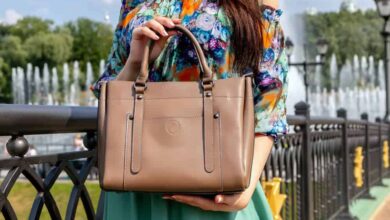How to Create Sustainable Products

Sustainable products aren’t always easy to spot. When first introduced to markets, they’re often expensive, and it takes decades of innovation to bring their price within range of many consumers.
Companies that treat sustainability as a core product design attribute are better equipped to break trade-offs between price, performance and environmental impact. To help shoppers identify these products, here are some characteristics to look for:
Materials
Ideally, sustainable materials are sourced from renewable and recycled sources and have a low environmental impact throughout the product’s life cycle. They should also be non-toxic and require minimal maintenance and repairs over their lifetime.
A material’s environmental impact can be analyzed through a life cycle assessment (LCA), which considers all stages of the product’s creation, such as extracting raw materials, manufacturing, and disposal. This assessment can help consumers make more informed decisions about the sustainability of the products they purchase.
For example, bamboo is a great sustainable material in its natural state, but if it is turned into fabric like Viscose or Lyocell, its production requires harsh chemicals that can have negative impacts on the environment. Instead, look for the Global Organic Textile Standard or Cradle to Cradle certification when purchasing fabric containing this material.
Linen is another sustainable fabric that requires little water and pesticides to grow and dry and was used by ancient cultures because it wicks away moisture, keeps you cool, and is soft on the skin. Other examples of sustainable building materials include repurposed slate shingles and heart pine joists from the Georgia Tech Alumni Association’s Kendeda building, as well as biodegradable plastics, such as those made from sugarcane and corn starch.
Energy
A major part of creating sustainable products is choosing renewable, eco-friendly energy sources to power them. Unlike fossil fuels, sustainable energy doesn’t pollute the environment (or at least, there’s a minimal risk), increase climate change or come with an expensive price tag. Examples of sustainable energy sources include wind, solar and water (hydropower).
Research shows that educating people about the benefits of sustainability can be effective. But how information is delivered can also make a difference. For example, when researchers provided feedback on energy efficiency to household consumers, they found that they were twice as likely to choose a more efficient product when the up-front costs were shown than when they were hidden.
Purchasing products that are made with sustainably sourced materials can be one of the easiest ways to go green. These products often cost less than their non-sustainable counterparts and will help reduce landfill waste. Choosing reusable items instead of single-use ones is another easy way to do your part, too.
Water
Water is an essential resource, central to human growth and survival. When properly managed, it supports healthy ecosystems and productive economies. However, when the quantity and quality of water is low or unsustainable, societies are threatened.
Sustainable water includes both potable and non-potable uses. Industrial water use is a significant part of total global water withdrawals, used for processing, washing, cooling, transporting substances within a facility and incorporating into a final product (USGS, 2010). Using efficient appliances and recycling or reuse of water can reduce the strain on municipal water supplies. Rainwater harvesting and desalinization may also be viable sustainable supply sources if energy demands are reduced and the technology is affordable.
Globally, humans buy one million plastic bottles every minute. These bottles end up in landfills and oceans and are often made with BPA, a harmful chemical that can leak into your drink. Quench your thirst with a stainless steel bottle from Onya that is BPA-free and eco friendly.
Waste
If a product doesn’t get reused, recycled or repurposed, it eventually becomes waste. The next step in the waste hierarchy, energy recovery converts the unwanted material into usable heat, electricity, or fuel. This can be done through incineration, gasification, pyrolysis and anaerobic digestion, among other processes.
Messages that focus on local impacts can be powerful in motivating consumers to reduce and avoid waste. An example is Tide’s #CleanPledge campaign, which demonstrates how washing your laundry in cold water can save enough energy to power a home for a year.
Reusing unwanted materials is a great way to cut out new material use. This can be as simple as getting your shoes repaired, donating clothes to charity and getting creative with food leftovers. Companies like Fab Habitat have developed eco-designs to make this happen. These products include rugs made from recycled plastic scraps and biodegradable iPhone and Android phone accessories.




